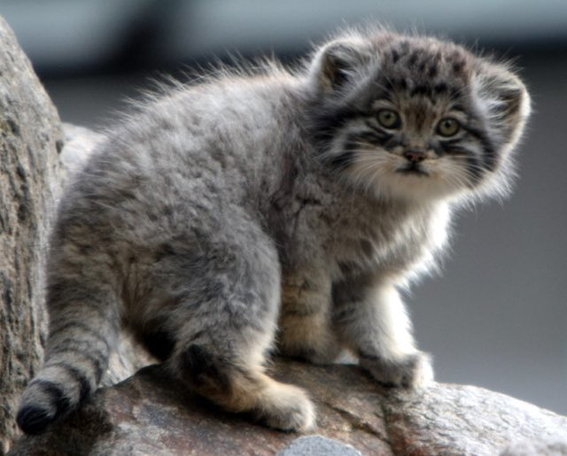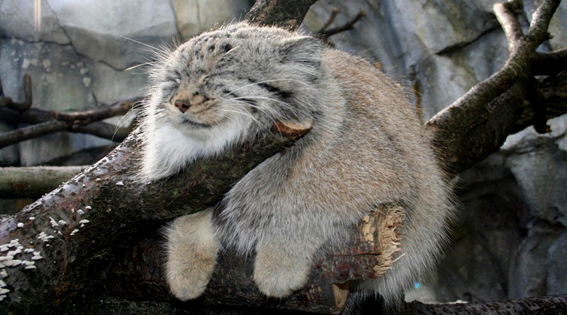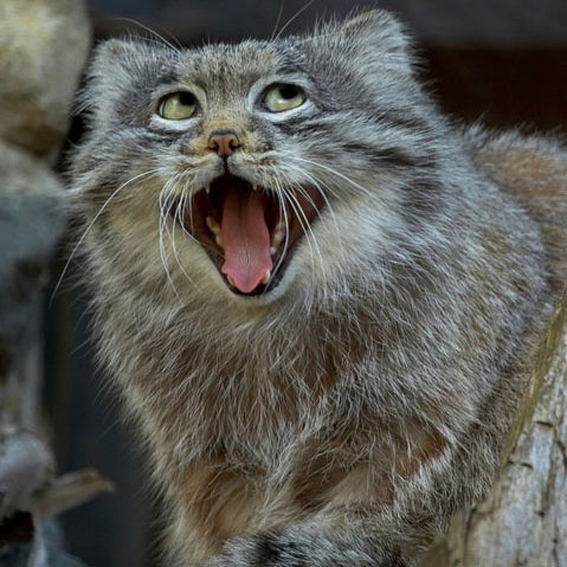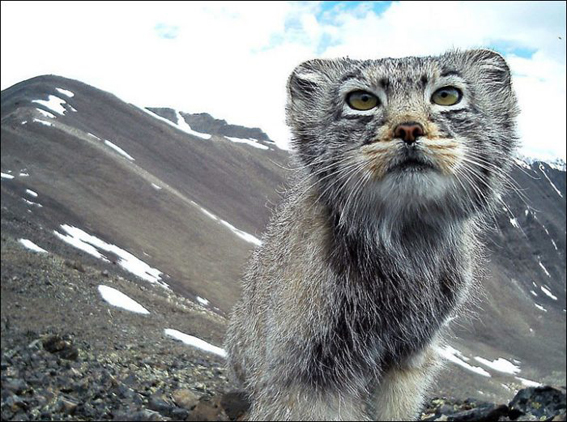THE MYSTERIOUS CAT OF PALLAS REALLY EXISTS
- Details
- Category: Special and wild cats
- Hits: 180

The Pallas cat (or Manul), is named after the German naturalist Pyotr Simon Pallas (1741-1811). It is a small wild cat and the weight varies from 2-4 to 5 kg in the adult cat.
It adapts to arid and cold environments and lives in rocky soils and in the prairies that cross Central Asia and some parts of Eastern Europe. They inhabit the Asian steppes up to heights of 4000m (13,000 feet) and withstand extreme temperatures due to their thick and long hair.
It is known for its flat face (like the Persian cat), the stocky build and the long hair with a white tip.
The color of the hair is ocher and has vertical stripes, which are often not visible due to the very thick fur. The color of the hair varies according to the seasons: for example in winter it is a uniform gray color.
They have short legs and round, low ears that make it look like an owl. Unlike other felines, the pupil at the moment of maximum brightness is reduced to a small sphere and not to a thin vertical line.
During the day the cat sleeps holed up in caves, burrows or crevices in the rock and only near the evening does it become active. It is a solitary nocturnal hunter and preys mainly on rodents and small mammals.

Unfortunately, before becoming a protected animal, Pallas's cat was hunted for its fur and tens of thousands of furs were collected every year from China, Mongolia, Afghanistan and Russia. Fortunately, today the cat is protected and considered useful because it feeds on parasites that damage agriculture. Unfortunately, the poisons that were used to kill rodents and pikas greatly reduced the survival of the Pallas cat.
Pikas make up the bulk of their diet, but they also feed on small rodents, birds, and insects. They catch their prey by hunting them or lurk outside their burrows ready for an ambush. If the burrows are shallow, they catch them with their paws.

Very little is known about the breeding habits of these solitary felines. Litters typically range from 3 to 6 puppies, but some have found eight as well. Like many other felines, kittens are blind and helpless when they are delivered. They are typically around 12cm long and weigh around 300g at birth.
They have tried to breed them in captivity but it is very difficult for them to survive and the survival rates are very low. They are victims of constant and violent infections because they have an undeveloped immune system, as they are solitary animals and their natural habitat is isolated and would normally not be exposed to infections. They live on average 12 years.

